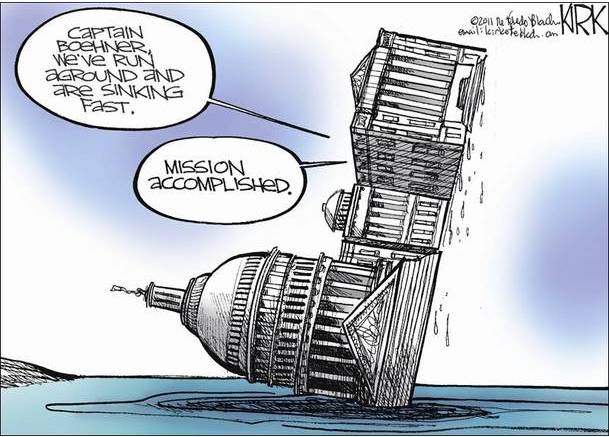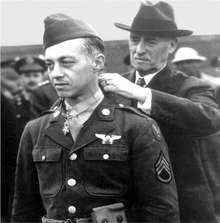
Month: December 2018
1885 Winchester
God a beautiful and classic Rifle! John Browning really put his mark on history with this 1st effort of his!
| Winchester ester Model 1885 | |
|---|---|
| Type | Rifle |
| Place of origin | United States |
| Production history | |
| Designer | John Browning |
| Manufacturer | Winchester |
| Produced | 1885–1918 |
| Specifications | |
| Barrel length | 26 inches (66 cm) |
|
|
|
| Action | Falling block |
Contents
[hide]
History[edit]
In 1878, the 23-year-old Browning designed a falling-block single-shot rifle, for which he was granted a patent the following year. Browning and his brother commenced making the rifles by hand in their second-floor workshop in Ogden, Utah, with limited success.
In 1883, Thomas G. Bennett, Vice-President and General Manager of the Winchester Repeating Arms Company, traveled to Ogden and negotiated the purchase of the single-shot design, as well as the prototype of what would become the Model 1886 lever-action – the beginning of the fruitful 20-year Winchester–Browning collaboration. Winchester’s engineers made some improvements to Browning’s design, including angling the block at six degrees to create a positive breech seal, and released the rifle as the Model 1885. Two popular models were made, the so-called Low Wall which showed an exposed hammer, firing less powerful cartridges, and the so-called High Wall for stronger cartridges whose steel frame covered most of the firing hammer when viewed from the side; but both were officially marketed by Winchester as the Single Shot Rifle.
It was produced principally to satisfy the demands of the growing sport of long-range “Match Shooting”, which opened at Creedmoor, New York, on June 21, 1872. Target/Match shooting was extremely popular in the US from about 1871 until about 1917, enjoying a status similar to golf today, and the Winchester company, which had built its reputation on repeating firearms, had in 1885 challenged the single-shot giants of Sharps, Remington, Stevens, Maynard, Ballard [1] et al., not only entering the competition, but excelling at it, with Major Ned H. Roberts (inventor of the .257 Robertscartridge) describing the Model 1885 Single Shot as “the most reliable, strongest, and altogether best single shot rifle ever produced.”[2]
Winchester produced nearly 140,000 Single Shot rifles from 1885 to 1920, and it was found that the falling-block Model 1885 had been built with one of the strongest actions known at that time. The falling block action was so strong that the Winchester Company used it to test fire newly created rifle cartridges. To satisfy the needs of the shooting and hunting public, the Model 1885 Single Shot was eventually produced in more calibers than any other Winchester rifle. Winchester also produced a large number of Single Shots in .22 caliber for the US Army as a marksmanship training rifle, the “Winder musket.”
In 2005, Winchester reintroduced their famed 1885 Single Shots, labeled the Limited Series. The 21st-century Winchester Single Shot rifles are built with modern technology and steels, enabling them to fire modern smokeless cartridges; the currently popular cartridges of .17 Remington, .243 Winchester and .30-06 Springfield were offered with standard rubber recoil pads and straight butt plates. However, four of those Limited Series Model 1885 SSs were subtitled Traditional Hunters. Those four rifles, in calibers .38-55 and .405 Winchester, .45-70 Government, and .45-90 BPCR, were built in the style of the 19th century, with crescent steel butt plates and 19th-century style folding tang sights, along with full octagon 28-inch-long barrels. Their rifling, in the case of the .38-55, are the (Winchester) traditional one complete turn within eighteen inches (1-18″) with rifle grooves at .376, and rifle lands measuring .368 of an inch. The .45-70 is by far the most readily available of these four vintage cartridges.
Modern cartridge advantages[edit]
The overall length of a Model 1885 with a 28-inch barrel[3] is the same basic length as a Winchester bolt-action Model 70with a 24-inch barrel. With a longer barrel, bullet velocities can be significantly increased over bolt-action rifles that have the same overall length, provided the proper combination of bullet and propellant is selected.
See also[edit]
- Falling-block
- List of Winchester models
- Single-shot
- Winchester Repeating Arms Company
- Winchester Rifle
References[edit]
- Jump up^ Walter, John (April 28, 2006). Rifles of the World (3rd ed.). KP Books. p. 47. ISBN 978-0896892415. Retrieved July 10,2016.
- Jump up^ Kelver, p. 47
- Jump up^ Winchester Repeating Arms Model 1885 High Wall
- McLerran, Wayne (2014). Browning Model 1885 Black Powder Cartridge Rifle – 3rd Edition: A Reference Manual for the Shooter, Collector & Gunsmith. TexasMac Publishing. ISBN 978-0-9893702-5-7, 418 pages.
Sources[edit]
- Kelver, Gerald O. Major Ned H. Roberts and the Schuetzen Rifle. 1998. Pioneer Press
External links[edit]
Maynard Harrison SmithFrom Wikipedia, the free encyclopedia
|
Maynard Harrison Smith
|
|
|---|---|

Secretary of War Henry L. Stimson awarding the Medal of Honor to S/Sgt. Smith
|
|
| Nickname(s) | Snuffy Smith |
| Born | May 19, 1911 Caro, Michigan |
| Died | May 11, 1984 (aged 72) Saint Petersburg, Pinellas County, Florida, USA |
| Place of burial |
Arlington National Cemetery, Arlington County, Virginia, USA
|
| Allegiance | |
| Service/ |
|
| Years of service | 1942–1945 |
| Rank | |
| Unit | 423d Bombardment Squadron |
| Battles/wars | World War II |
| Awards | |
Maynard Harrison “Snuffy” Smith (May 19, 1911 – May 11, 1984) was a United States Army Air Forces Staff Sergeant and aerial gunner aboard a B-17 Flying Fortress bomber in World War II, received the Medal of Honor for his conduct during a bombing mission over France on May 1, 1943.[1][2]
Contents
Enlistment[edit]
Maynard H. Smith enlisted in the US Army Air Forces in 1942. After completing basic training he volunteered for aerial gunnery school. At the time all aerial gunners were non-commissioned officers and the move to the school was a quick way for the private to gain rank and pay.[2][3]
After completing the aerial gunnery school, he was shipped overseas to Thurleigh, Bedfordshire, in south-central England, where he joined the 423rd Bombardment Squadron, 306th Bomb Group. Staff Sergeant Smith quickly gained a reputation as a stubborn and obnoxious airman who did not get along well with the other airmen stationed there, hence his nickname “Snuffy Smith”, possibly from the popular comic strip of the era, Barney Google and Snuffy Smith. Consequently, it was six weeks before he was assigned his first combat mission.[2][3]
Medal of Honor action[edit]
It was during his first mission, on May 1, 1943 that Staff Sergeant Smith, who was assigned to the ball gun turret, helped save the lives of six of his wounded comrades, put out a blazing fire, and drove off wave after wave of German fighters.
The target of the mission was the U-Boat pens at Saint-Nazaire in Loire-Atlantique, France, on the Bay of Biscay. Saint Nazaire was heavily defended by antiaircraft guns and was nicknamed “flak city” by the airmen.[4]
Several of the bombers failed to rendezvous as intended, and others had mechanical problems and had to turn back. The middle portion of the bombing mission went well, with no German fighters engaging the mission until after they had released their bomb loads. The bombers managed to drop their payload on target with little resistance from the Germans in occupied France. As the fighters came up, the bombing group managed to elude them by flying into a large cloud bank.[4]
Due to a navigational error, after being in the cloud bank, the navigator in the lead plane believed he was approaching the southern coast of Britain. In fact, the aircraft were approaching the heavily fortified German-occupied city of Brest, France and the southern coast of the Breton Peninsula. The pilot began to descend to 2,000 feet and was almost immediately overtaken by several German fighters and intense anti-aircraft fire.[5]
Staff Sergeant Smith’s bomber was hit, rupturing the fuel tanks and igniting a massive fire in the center of the fuselage. The damage to the aircraft was severe, knocking out communications and compromising the fuselage’s integrity. Smith’s ball turret lost power and he scrambled out to assist the other crew members. Three crew members bailed out, while Smith tended to two others who were seriously wounded.
In between helping his wounded comrades, Smith also manned the .50 caliber machine guns and fought the raging fire. The heat from the fire was so intense that it had begun to melt the metal in the fuselage, threatening to break the plane in half.
For nearly 90 minutes, Smith alternated between shooting at the attacking fighters, tending to his wounded crew members and fighting the fire. To starve the fire of fuel, he threw burning debris and exploding ammunition through the large holes that the fire had melted in the fuselage. After the fire extinguishers were exhausted, Smith finally managed to put the fire out, in part by urinating on it.
Staff Sergeant Smith’s bomber reached England and landed at the first available airfield, where it broke in half as it touched down. Smith’s bomber had been hit with more than 3,500 bullets and pieces of shrapnel.
The three crew members who bailed out were never recovered and presumed lost at sea, but Smith’s efforts on that day undoubtedly saved the lives of six others aboard his aircraft.[3]
Journalist Andy Rooney, at the time a reporter for Stars and Stripes, was at the base where Smith’s plane landed and wrote a front-page story about it. While reflecting on Smith’s award years later on 60 Minutes, Rooney indicated “I was proud of my part in that.”[6]
Smith was assigned to KP duty the week that he was awarded the Medal of Honor as punishment for arriving late to a briefing. Secretary of War Henry L. Stimson placed the medal around Smith’s neck during a formation.


Well I thought it was funny!
 If you are married or have a woman in your life. Then you will understand this one!
If you are married or have a woman in your life. Then you will understand this one!





